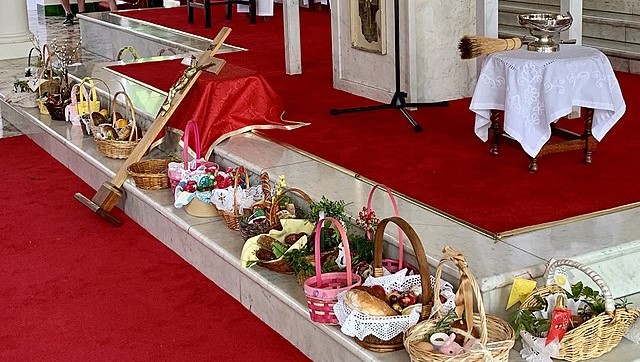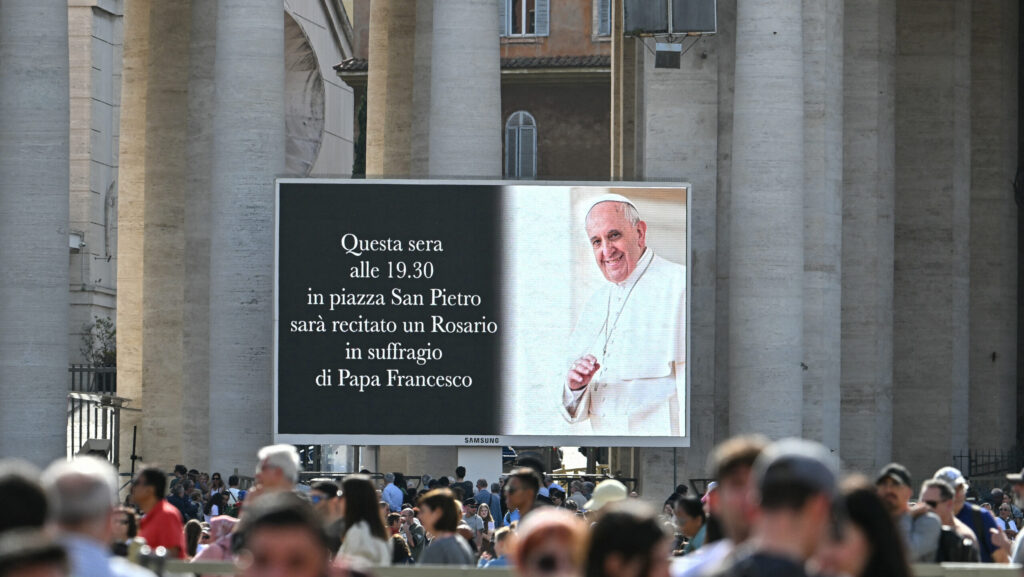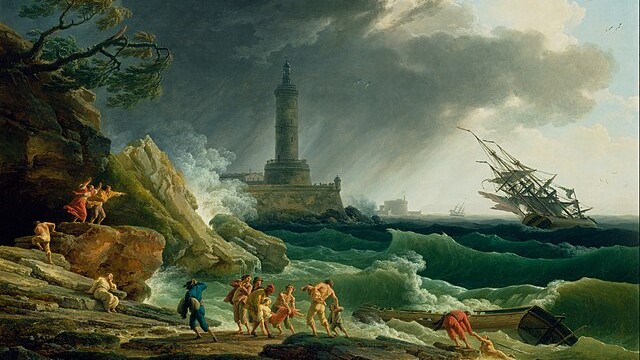The following is an adapted version of an article written by Orsolya Ferenczi-Bónis, originally published in Magyar Krónika.
Easter Sunday celebrates the resurrection of Jesus Christ. One of the unique folk customs on the night between Holy Saturday and Easter Sunday was known as ‘Christ-seeking’ (Krisztus-keresés). As the name suggests, the entire village—young and old—would set out together in search of a statue of the risen Christ, which a resident had earlier hidden at the farthest cross along the village border.
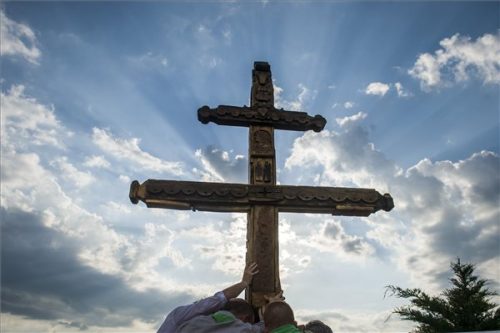
Gathering at the entrance of the church, the crowd would sing as they made their way from cross to cross, both in the village and along its borders. At each station, they prayed for the repentance of sinners, protection from natural disasters, and a bountiful harvest. Once the statue was found, it was carried back in a joyous procession to the church, followed by another to the cemetery, where people stopped to pray at the graves of their loved ones.
According to Hungarian Ethnography (Magyar néprajz), the custom of border-walking (határkerülés or határjárás) was widespread across medieval Hungary. People would carry the news of Christ’s resurrection around the village and its lands, symbolically including nature in the triumph of the Lord. The practice was meant to ward off disasters and ensure an abundant harvest. Participants not only on foot, but sometimes travelled on horseback too, singing and praying as they moved through the countryside.
Ethnographer Sándor Bálint, in his book Christmas, Easter, Pentecost — Traditions of Major Holidays in Hungary and Central Europe (Karácsony, húsvét, pünkösd — A nagyünnepek hazai és közép-európai hagyományvilágából), includes a prayer recited during border-walking in the Székely Land region of Transylvania:
‘Lord God, bless our borders, our vineyards, and our gardens! Bless our village and our homes! Bless our country and our nation! Send us justice and law, and grant us good leaders! Keep hail, locusts, and floods from our fields, and fire and enemies from our village! Grant us a fruitful year and peace! Lord God, hear our prayer!’ The tradition of walking the borders has roots in ancient magical protection rituals, where communities would encircle their land to protect it from harm. Interestingly, in some places, wells and springs along the way were also cleaned during the procession.
The Blessing of the Easter Table
Another custom is the blessing of Easter food—traditionally called kókonya. People believed that by having their food blessed, they would be protected from overindulgence after the long Lenten fast. Eggs, ham, sweet bread (kalács), horseradish, and salt were placed in baskets and covered with a cloth. After the priest’s blessing at church, families would rush home, convinced that the first to return would also be the first to finish the harvest that year.
Blessed food could not be ‘just’ eaten, and there was a way of using leftovers. The first portions of the kókonya were given to beggars waiting outside the church, then taken to the beehives, where people would make the sign of the cross over them. Only after these rituals could the family begin their Easter meal. There was also a custom of making small layered bites from the blessed food, called ‘soldiers’ (katonák). The firsts of these were thrown into the fire and the well to protect the home and ensure clean water. People were careful not to let any of the blessed food fall to the ground. They believed that the more pieces of holy meat that fell, the less fat the pig would have, and that the more crumbs of kalács that fell, the less wheat would grow.
The Easter Joy of a Redeemed Humanity
Jesus Christ came into the world to redeem humanity, and the Bible refers to Him as the Lamb of God. As Paul writes: ‘Get rid of the old yeast, so that you may be a new unleavened batch—as you really are. For Christ, our Passover lamb, has been sacrificed. Therefore, let us keep the festival, not with the old bread leavened with malice and wickedness, but with the unleavened bread of sincerity and truth.’ (1 Corinthians 5:7–8) Depictions of the Lamb of God appear frequently in medieval Hungarian religious art, such as at the 12th-century Church of Saint Michael in Csempeszkopács.
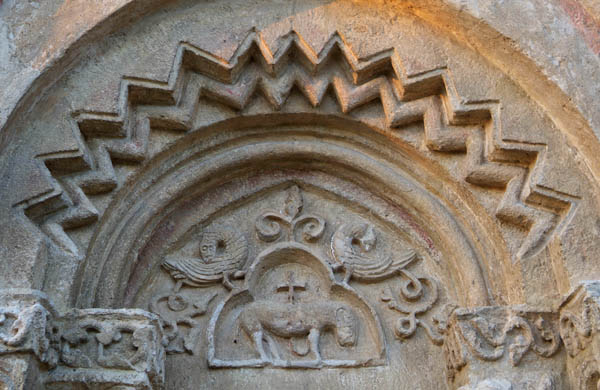
Sándor Bálint notes that until the height of the Middle Ages, Easter was primarily associated with the joy of redeemed humanity: ‘The joy of the redeemed human condition reigned: the Son of God descended into Hell, then rose on the third day, triumphing over death and Satan. The symbolic representation of early medieval Christianity was not yet the crucifix, but Christ the King enthroned in heavenly glory, or the apocalyptic Lamb standing on Mount Zion.’
The Egg — An Archaic Symbol of Rebirth
One of the oldest traditional Easter foods is the egg, an ancient symbol of life and rebirth. Just as life hatches from an egg, Christ emerged from the tomb to bring salvation to humankind. The red-dyed egg specifically symbolizes the blood Christ shed for humanity. Easter eggs were traditionally given by godparents to their godchildren, but another custom involved the husband slicing a blessed egg in half and sharing it with his wife—believed to ensure that the couple would always find the right path together. There was also a widespread belief that anyone who shared a blessed egg with another could later find their way home from the forest simply by thinking of the person they had shared it with.
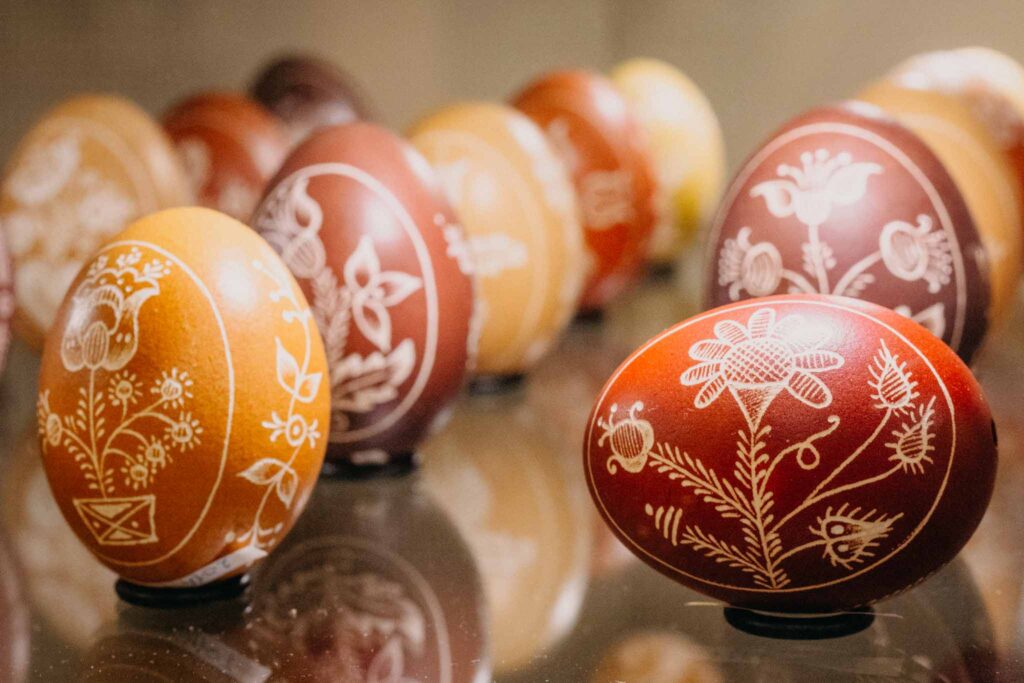
Blessed eggs were also used in various rituals. To encourage a good harvest, one was sometimes buried in the first furrow of the ploughed field or placed in the seed bag to mix with the grain before sowing or simply buried in the ground. To protect against lightning strikes, the egg was tossed over the house and buried where it landed. Easter eggs were also part of traditional games such as egg tapping, clinking, and ‘kókányolás’, in which boys would knock their gifted eggs together—whoever’s egg cracked first, lost.
Horseradish to Ward Off Evil, and the Protective Power of the Ham Bone
In Hungarian folk belief, the sharpness of horseradish and its tear-inducing scent had the power to drive away evil. Onion and salt were also believed to possess apotropaic (evil-averting) qualities—strengthened further through blessing. People would save a portion of the blessed salt to use later in bread dough, ensuring a successful bake. The Easter ham was eaten carefully to avoid breaking the bone, as the leftover ham bone, along with the rest of the kókonya, such as eggshells and crumbs of the blessed sweet bread, were believed to offer powerful protection.
The preserved blessed ham bone was placed in the chimney flue to ward off fire, under the attic roof to protect the house from hail, hung on a barren tree to bring a bountiful harvest, or put in the stable to protect the animals from witches and thrown into the wheat field to protect it from hail and hay. The eggshells were scattered on fields to keep pests away or on streets and public spaces to shield the community from misfortune. Crumbs from the blessed bread were said to prevent house fires, while the smoke from burning a piece of the sweet bread was believed to heal fire wounds.
Related articles:
Click here to read the original article.

